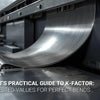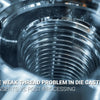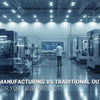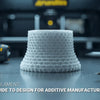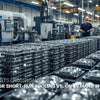Die Casting Machine:Types, Uses, and Benefits
Die Casting Machine
What is a Die Casting Machine?
A die casting machine is like the superhero of the manufacturing world. It’s the powerhouse that molds molten metal into intricate shapes with precision and speed. Imagine a magic mold that turns liquid metal into solid, usable products in the blink of an eye. Well, that’s essentially what a die casting machine does. It’s widely used in industries like automotive, aerospace, electronics, and even kitchen appliances. But what makes these machines so special? Let’s dive in and find out!
Types of Die Casting Machines
Die casting machines come in two main types: hot chamber and cold chamber. Each has its unique features and is suitable for different types of metals and applications.
Hot Chamber Die Casting Machines
Hot chamber machines, also known as gooseneck machines, are perfect for metals with low melting points like zinc and magnesium. The machine's chamber is submerged in a furnace that keeps the metal molten. The molten metal is then forced into the die under high pressure. This type of machine is ideal for high-volume production because it’s fast and efficient.
Cold Chamber Die Casting Machines
On the flip side, cold chamber machines are designed for metals with high melting points, like aluminum and copper. Here, the molten metal is ladled into a chamber separate from the melting furnace. The metal is then injected into the die using high pressure. Although not as fast as hot chamber machines, cold chamber machines are robust and can handle more durable metals.
Components of a Die Casting Machine
Die casting machines are composed of several key components that work in harmony to produce high-quality castings.
Basic Components
The basic components of a die casting machine include the injection system, hydraulic system, and die. The injection system is the heart of the machine, responsible for forcing the molten metal into the die. The hydraulic system provides the necessary pressure, and the die is the mold that shapes the final product.
Advanced Features
Modern die casting machines often come equipped with advanced features like computerized controls, automatic lubrication systems, and multi-slide capabilities. These features enhance precision, reduce manual labor, and increase production speed.
How Die Casting Machines Work
Ever wondered how these machines transform molten metal into intricate shapes? It’s all about precision and pressure!
Die Casting Process Steps
- Melting the Metal: The first step involves heating the metal until it turns into a liquid state.
- Injecting the Metal: Once molten, the metal is injected into a mold, or "die," at high speed and pressure.
- Cooling and Solidifying: The metal cools rapidly inside the die, solidifying into the desired shape.
- Ejection: After the metal has cooled and solidified, the die is opened, and the newly formed casting is ejected.
Advantages of Using Die Casting Machines
Why should you care about die casting machines? Well, here are some benefits that might catch your eye.
- Precision and Accuracy: Die casting machines produce parts with tight tolerances and complex geometries.
- High Production Rates: These machines are incredibly fast, making them perfect for mass production.
- Cost-Efficiency: With minimal waste and reduced need for post-processing, die casting is a cost-effective manufacturing method.
- Strength and Durability: Die-cast parts are robust and have high resistance to temperature and corrosion.
Die Casting Machine Materials
The materials used in die casting play a crucial role in determining the quality and properties of the final product.
Aluminum in Die Casting
Aluminum is one of the most popular materials used in die casting because of its lightweight nature and excellent mechanical properties. It’s ideal for producing parts that need to be both strong and light, such as automotive components.
Zinc Die Casting Machines
Zinc, on the other hand, is known for its versatility and ease of casting. Zinc die casting machines are perfect for creating small, intricate parts with a high level of detail. Plus, zinc has excellent corrosion resistance, making it a great choice for outdoor applications.
Applications of Die Casting Machines
Die casting machines are incredibly versatile and are used in various industries for different applications.
Die Casting in Automotive Industry
In the automotive industry, die casting machines are used to create engine blocks, transmission cases, and other critical components. The precision and strength of die-cast parts make them ideal for these applications, where performance and durability are paramount.
Die Casting Machine Maintenance Tips
Keeping a die casting machine in top condition is crucial for maintaining production efficiency and prolonging the machine's lifespan.
Regular Cleaning Practices
Regular cleaning of the machine's components, such as the dies, nozzles, and injection systems, is essential to prevent buildup and ensure smooth operation.
Wear and Tear Prevention
Routine inspections for wear and tear can help identify potential issues before they become major problems. Replacing worn parts and lubricating moving components are simple yet effective ways to extend the machine’s life.
Troubleshooting Common Issues
Even the best die casting machines can encounter problems. Here are some common issues and how to troubleshoot them.
- Casting Defects: Defects like porosity or cold shuts can often be traced back to incorrect temperatures or inadequate pressure settings.
- Machine Malfunctions: Issues with the hydraulic system or injection system can cause the machine to malfunction. Regular maintenance and proper training for operators can help prevent these problems.
Die Casting Surface Finishing Techniques
Surface finishing is an important step in the die casting process, as it enhances the appearance and performance of the final product.
Techniques like polishing, painting, and anodizing are commonly used to improve the surface quality and corrosion resistance of die-cast parts. Choosing the right finishing technique depends on the specific application and desired properties of the final product.
Future of Die Casting Machines
The future of die casting machines looks promising, with advancements in technology leading to even more efficient and precise machines. Innovations such as automated systems, IoT integration, and improved materials are set to revolutionize the industry, making die casting machines faster, smarter, and more versatile than ever before.
FAQs
-
What is the difference between hot chamber and cold chamber die casting machines?
- Hot chamber machines are used for metals with low melting points like zinc, while cold chamber machines are designed for metals with high melting points like aluminum.
-
How often should die casting machines be maintained?
- Regular maintenance should be performed weekly, with more thorough inspections and servicing done monthly or quarterly, depending on usage.
-
Can die casting machines handle all types of metals?
- Die casting machines are typically used for non-ferrous metals like aluminum, zinc, and magnesium. They are not suitable for ferrous metals like iron and steel.
-
What are some common defects in die casting?
- Common defects include porosity, cold shuts, and warping, often caused by incorrect temperatures or pressure settings.
-
Is die casting environmentally friendly?
- Die casting can be environmentally friendly when using recycled materials and energy-efficient machines. It produces minimal waste compared to other manufacturing processes.

